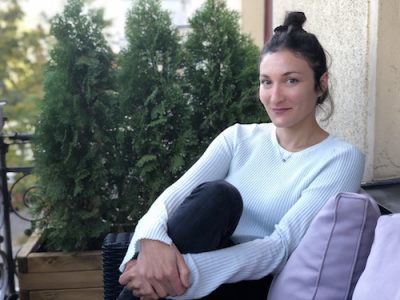Making Macondo: How the “One Hundred Years of Solitude” Cinematographers Brought Gabriel García Márquez’s Epic to Netflix
Directors Alex García López and Laura Mora have undertaken the historic feat of adapting Nobel laureate Gabriel García Márquez’s 1967 novel, One Hundred Years of Solitude, into a sixteen-part Netflix series, the first half of which was released on December 11. Unlike the book, which moves back and forth in time across seven generations of the Buendía family, the show is chronological (and it was shot chronologically, too), but beyond the change in timing, the series is loyal to Márquez’s magical realism, which is woven as a beautiful matter of course into the show’s naturalistic aesthetic.
The story opens at the wedding of José Arcadio Buendía (Marco González) and Úrsula Iguarán (Susana Morales), cousins who are warned by Úrsula’s mother that their union will produce an offspring with a pig’s tail. Úrsula avoids sex with her new husband, and during a cockfight, José Arcadio’s adversary, Prudencio Aguilar, calls him impotent. He kills Prudencio, who appears as a bloodied ghost around the couple’s home until they leave their village behind. Leading a small group, José Arcadio founds Macondo, a utopian town unconnected from the world but for a group of Gypsies who pass by every few years.
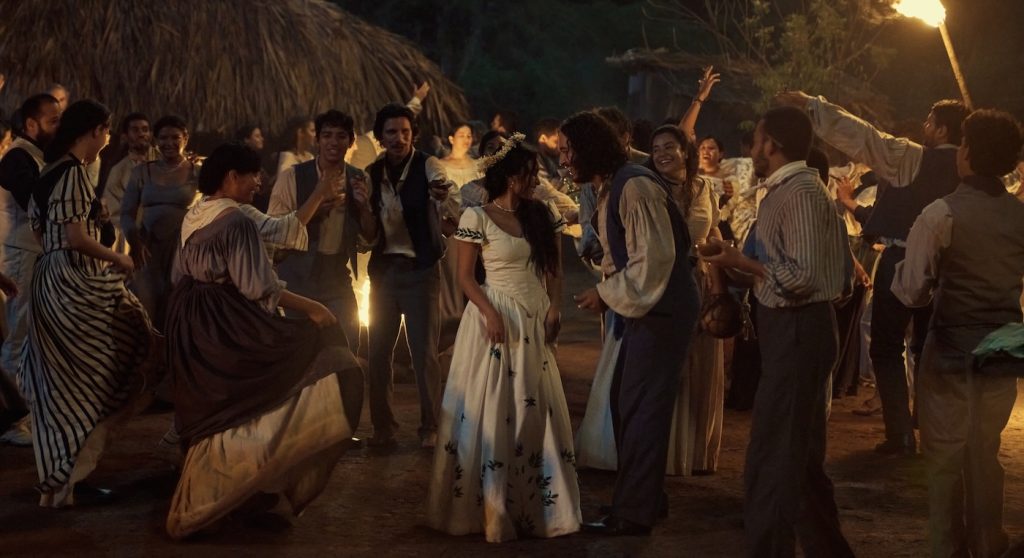
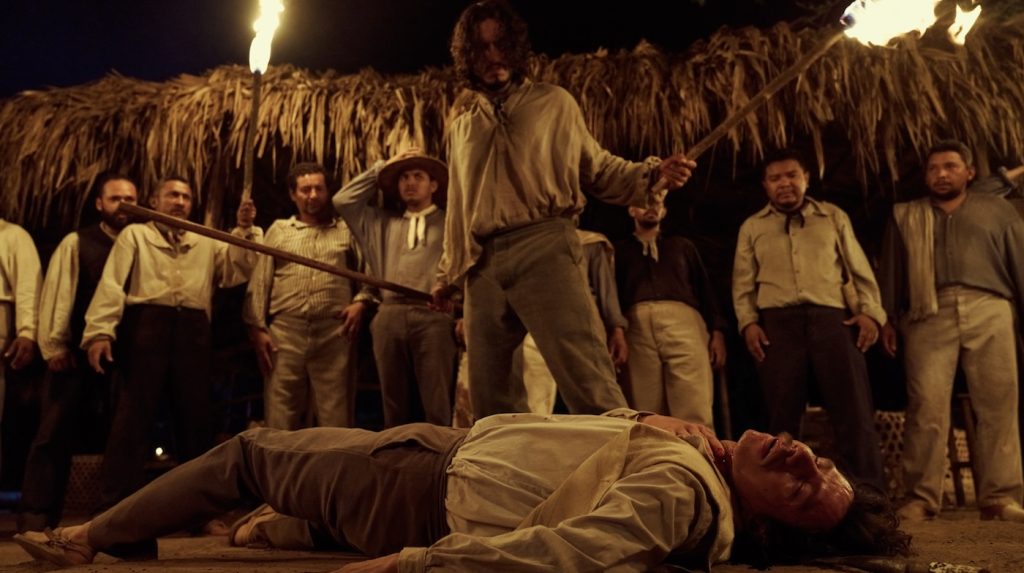
The Gypsies’ leader, Melquiades (Moreno Borja), introduces the townspeople to wonders like magnets and ice, and his influence pushes José Arcadio, already an idealist and a dreamer, into a life of scholarly withdrawal that eventually becomes madness. Before then, José Arcadio and Úrsula have three children. The oldest, also José Arcadio, disappears with one of the Gypsy women. Aureliano, who eventually becomes a colonel fighting against the Conservative government in Colombia’s civil war, has accurate premonitions of many things, but not his own death by firing squad. The youngest, Amaranta, finds herself in a love triangle with her stepsister, Rebeca, a once-silent orphan delivered to the Buendía household along with a sack of her deceased parents’ bones. The sack remains in the house intact, trundling from room to room on its own.
The series was shot by cinematographers Paulo Perez (episodes 1, 2, 3, 7, and 8) and María Sarasvati Herrera (episodes 4, 5, and 6). Whether indoors or out, the show feels close to the natural world, the nights lit by candles and the days by bright equatorial sunshine. The voice of Aureliano Babilonia, a sixth-generation Buendía and the one to decipher Melquiades’ writings about his family, narrates the story as he learns it, an element which Perez reflects in the cinematography’s flexibility. “Babilonia doesn’t know what’s going to happen, so it has to be a very free camera,” Perez said. His episodes make use of a handheld camera, and we feel part of the characters’ action as they embark on what begins, at least, as an adventure. “We wanted to feel the freedom of the people of the [Caribbean],” Perez said. “In this moment, it was the diaspora, the dream of a new time, of a new civilization. We wanted to feel this type of energy in the camera.”
After many years in Macondo, the rest of the world eventually makes contact with the first two generations of the Buendías. “When my block arrives, religion and the government enter Macondo, and many things change,” said Herrera. “Paulo’s block was about discovery, about freedom. Ours was much more controlled, even the Steadicam, the sequence shots.” Herrera worked with director Laura Mora to establish a framed, pictorial language that highlights what the characters experience as their individual lives and town undergo radical change.
Both before and after Macondo’s discovery by the outside world, significant action takes place at night. “We talked a lot about how moonlight should be — which color, which texture? Every night is different,” Herrera said. Perez lit much of his block with fire from candles and torches, while Herrera, who shot more nighttime interiors, relied on LEDs. Both cinematographers aimed for a realistic sense of darkness. “I like the darkness,” Perez pointed out. “You see what’s important in the frame, and that feels natural.” And at five square kilometers, the entirety of Macondo couldn’t be lit, anyway.
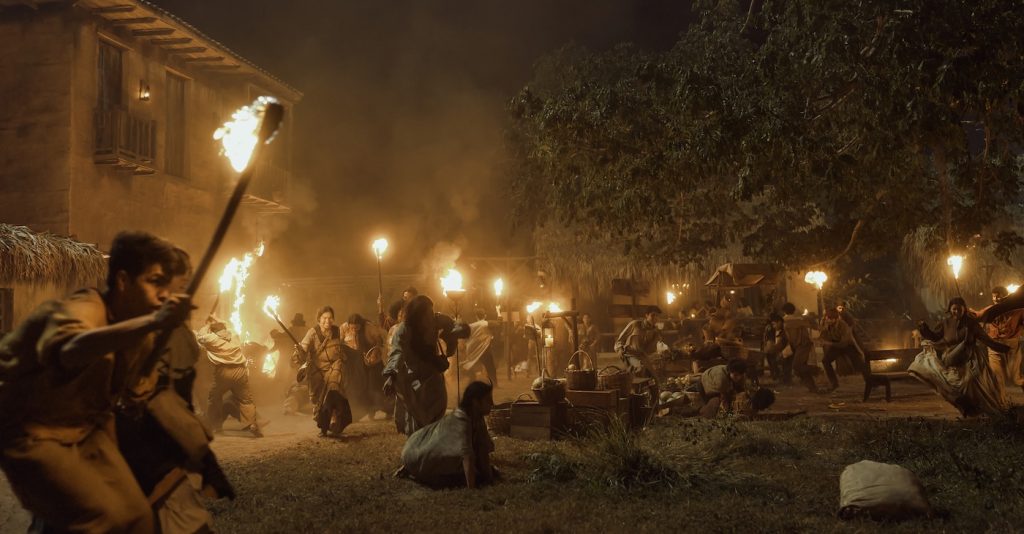
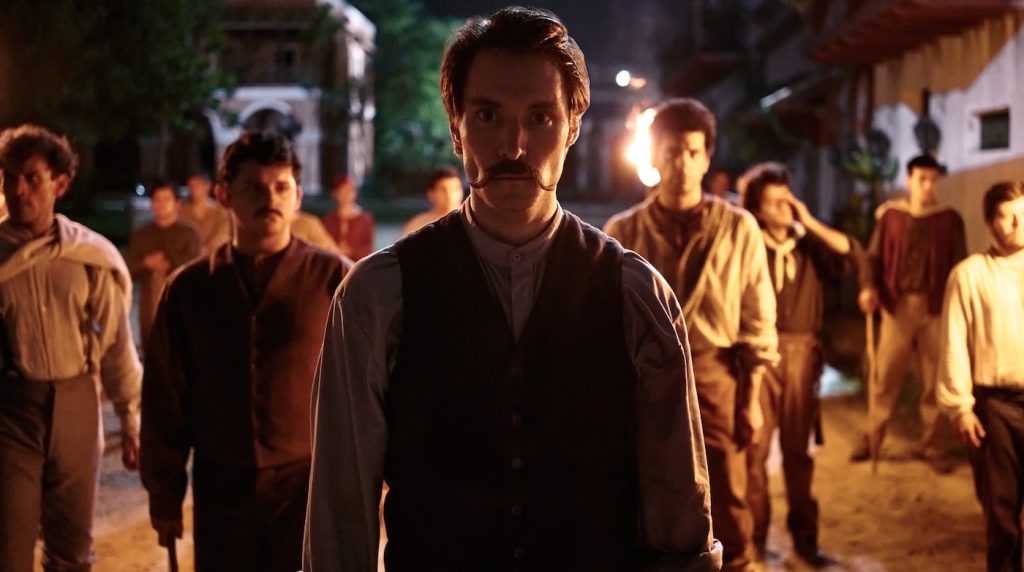
All the different versions of Macondo were built on a farm about four hours from Bogota. The Buendías’ house, which grows through the episodes to accommodate the expanding family, was protected under a hangar-size tent. The tent couldn’t support lights, so the cinematographers worked with cherrypickers and balloons to hang lighting. For the exteriors, they worked with available light, shooting early and late to avoid the harshness of the equatorial sun directly overhead. Both inside and out, there was an emphasis on the genuine. “The magic realism happened very naturally,” Perez said, and the cinematographers carried that ethos over to how One Hundred Years of Solitude was shot.
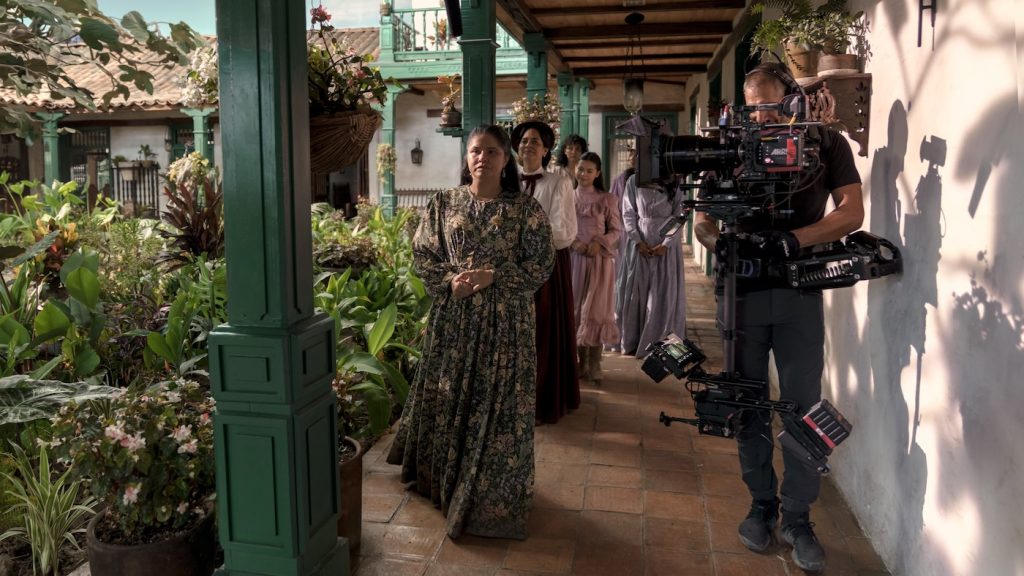
Perez and Herrera also worked to keep the cinematography consistent between episodes. “There were these gaps between blocks where many things changed in the town over the years,” Herrera said. “So we had to find a way to respond to what was happening in the story, but at the same time, merge between blocks so it didn’t look like a completely different show.” She and Perez watched each other’s work to create a consistent language, matching colors and contrast between the episodic leaps. A focus on Marquez’s original work also brings consistency. “We worked a lot with the book,” Perez said, with the pair looking at how they could recreate this monumental work of literature in a way that would help people understand it. As we watch a full frame of characters disappear to leave behind a single Buendía, or get close to another family member, isolated in a close-up, anamorphic lenses and a diaptor bring to life the Buendías’ fate first set out by Marquez’s words. As for the cinematographers’ relationship to the original work? “We know it by memory,” Herrera said.
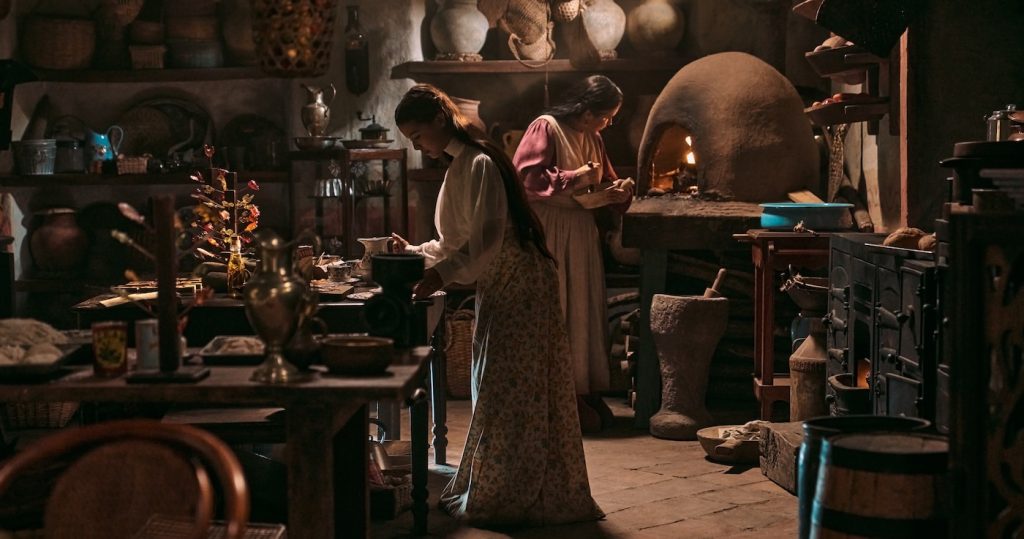
For more on big titles on Netflix, check these out
“Maria” Cinematographer Ed Lachman on Painting Angelina Jolie’s Mythic Opera Legend With Light
“Maria” Costume Designer Massimo Cantini Parrini on Designing Angelina Jolie as a Legendary Diva
Featured image: Cien Años de Soledad S1. (L to R) Marco Antonio González as José Arcadio Buendía, Susana Morales as Úrsula Iguarán, Fernando Bocanegra as Catarino, Viña Machado as Pilar Ternera, Braian Aburaad as Magnifico Visbal in Cien Años de Soledad. Cr. Mauro González /Netflix © 2024 | Behind the scenes shot of the founders exodus, led by José Arcadio Buendía and Úrsula Iguarán as they travel across a river in search of the land to build Macondo.


